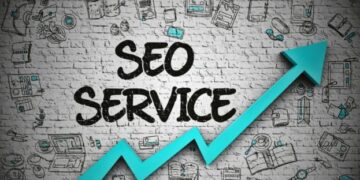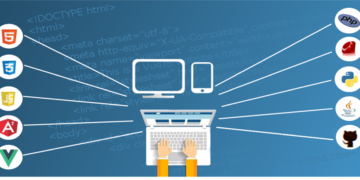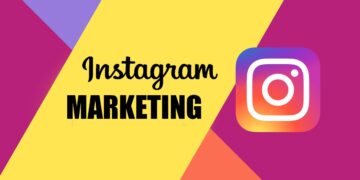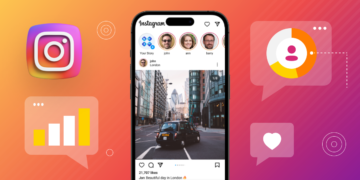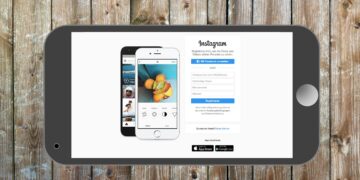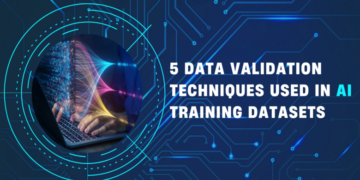Over the years, “big data” has been associated with extensive technological enterprises managing vast volumes of information. Nonetheless, it is imperative to recognize that data analysis prowess is not exclusive to corporate giants. Small businesses, too, possess the capacity to leverage this analytical potential to gain a competitive edge, improve efficiency, and ultimately thrive.
72% of small and medium-sized businesses (SMBs) reported investing in data analytics tools, with the majority of them experiencing increased revenue and profitability.
This blog will explore how small businesses can use big data with practical examples.
- Know your customers inside out
Imagine creating targeted marketing campaigns that resonate with individual customers instead of a generic audience. Big data makes this possible. It helps you analyze your website traffic, social media engagement, and purchase history to understand buying habits, preferences, and pain points.
Let’s consider a small business specializing in data enrichment services that helps a local boutique understand its customers in a better way. By analyzing customer data, they fill in missing information and segment the customer base. They identify incomplete profiles and outdated contact details, thus enhancing the records. Then, they segment customers based on shopping habits. For instance, they notice that some prefer high-end designer clothing while others opt for casual wear. With this insight, the boutique tailors its promotions, leading to increased engagement and sales.
- Analyze the market
Utilize big data analytics to assess market trends, competition, and consumer sentiment. This information can aid in identifying new opportunities, optimizing pricing strategies, and staying ahead in the market. For instance, a clothing boutique uses social media listening tools to track competitor strategies and trending styles. They discover a spike in the popularity of sustainable clothing. When they incorporate these eco-friendly fabrics and market them, they attract new customers and differentiate themselves from the competition.
- Personalize your marketing strategies
One-size-fits-all marketing is a thing of the past. With big data, you can segment your audience based on demographics, interests, and past behavior. This allows you to create targeted campaigns with personalized messages and offers that resonate with individual customers, leading to higher engagement and conversion rates.
- For better future planning
Big data isn’t just about analyzing the past; it’s also about shaping the future. For instance, a business can analyze its social media data – likes, comments, stories, and user posts to identify the product gap. Using this data, they can try to bridge the gap between what customers actually want and where the product stands now.
This is not restricted to just social media. You can analyze different data types present in your database to make future predictions. Let’s say that you can keep track of your product availability, purchase history, sales history, and more by analyzing the customers’ feedback on your product. This will help you avoid overstocking or understocking, leading to proper inventory management. This entire exercise will save you from unforeseen losses.
- Improve your pricing decisions
Market forces constantly fluctuate, influencing what customers are willing to pay. Big data keeps you in tune with these changes, revealing seasonal trends, emerging preferences, and economic shifts. This real-time understanding allows you to adjust your pricing dynamically, ensuring you capture the value your product deserves while remaining relevant in the market.
Real-world examples of brands leveraging big data
While the theoretical examples are compelling, here are some real-life examples to help you understand how big businesses leverage the same big data. You need to understand here that data remains the same, and the ability to unlock its valuable insights and translate them into actionable strategies differentiates successful companies.
- Amazon: The master of personalization
Imagine walking into a store where every product whispers your name. That’s the magic of Amazon’s big data engine. Amazon personalizes product recommendations with high accuracy by analyzing vast amounts of purchase history, browsing behavior, and even social media interactions. This data-driven approach fuels sales and fosters customer loyalty, making them feel truly understood and valued.
- Netflix: Predicting your next binge-worthy show
How does Netflix know exactly what you want to watch next? The answer lies in their sophisticated big data algorithms. Analyzing viewing patterns, search queries, and even completion rates allows Netflix to predict individual preferences with remarkable precision. This results in highly personalized recommendations, keeping users engaged and subscribed, solidifying Netflix’s dominance in the streaming world.
- Walmart: Optimizing the retail experience
From stocking shelves to predicting demand, Walmart leverages big data to optimize every aspect of its operations. They can accurately predict product demand by analyzing point-of-sale data, customer demographics, and weather patterns. This ensures shelves are always stocked with the right items, minimizing waste and maximizing sales. Additionally, customer loyalty programs powered by big data insights personalize promotions and offers, further strengthening customer relationships.
- Airbus: Taking flight with predictive maintenance
Imagine a plane predicting its maintenance needs. Thanks to big data, Airbus is making this a reality. By collecting sensor data from thousands of aircraft, they can predict potential equipment failures before they occur. This proactive approach minimizes downtime, ensures passenger safety, and reduces maintenance costs significantly, giving Airbus a significant edge in the competitive aviation industry.
These are just a few examples of how big data revolutionizes various industries. From personalizing experiences to optimizing operations, big data empowers businesses to make smarter decisions, drive efficiency, and, ultimately, achieve sustainable success.
Also, read: business registration
But, where to start?
Now that you understand how big data will help your business, you don’t need to be overwhelmed by the vastness of information. Here are some practical steps to get started.
- Identify your goal: Before starting, ask yourself, “What do I want to achieve with big data?” Is it increased sales, improved customer satisfaction, or optimized inventory management? Defining your goal helps you choose the right data to analyze and track meaningful metrics.
- Start small & scale as needed: You don’t need to analyze everything at once. Choose a specific area, like marketing or customer service, and analyze a manageable amount of data. As you gain confidence and expertise, you can expand your scope.
- Utilize free & affordable tools: Many free and affordable data analytics tools are available for small businesses. These tools offer user-friendly interfaces and basic insights to get you started. Explore options like Google Analytics, HubSpot CRM, or Zoho Analytics.
- Leverage existing data: Look beyond traditional sources like sales figures. Consider website traffic, social media engagement, customer surveys, and email interactions. You might be surprised at the valuable insights hidden within your existing data.
- Seek help when needed: Don’t be afraid to seek guidance. Many consultants and agencies specialize in helping small businesses leverage big data. They can provide tailored advice and data analysis expertise and even build custom solutions for your specific needs.
Some additional tips
- Data quality is key: Ensure your data is accurate and complete to avoid misleading insights. In case your data is dirty, look for data cleansing or a data cleansing service provider to prepare your data for accurate analysis.
- Data privacy is crucial: Respect customer privacy by adhering to data regulations and obtaining consent for data collection and use.
- Security is essential: Protect your data from breaches and unauthorized access.
Big data is an ongoing journey, not a one-time project. Experiment, analyze, refine, and iterate your approach. As you learn and grow, the power of big data will become an increasingly valuable asset, propelling your small business toward success.


